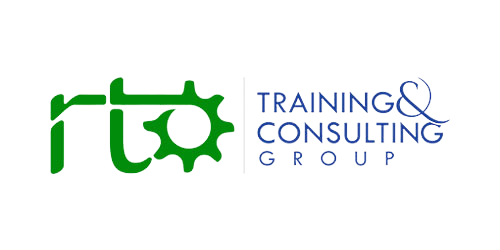A new compact between speed and justice
Australia’s student-visa system in 2025 runs on a hybrid engine: algorithms triage, pattern-match, and prioritise at machine speed, while a human officer owns any refusal decision and records reasons grounded in law. That architecture is not accidental. It is a deliberate response to two forces pulling in opposite directions—ever-rising application volumes that demand automation, and hard legal limits that insist adverse decisions be made by an authorised person who has actually weighed the evidence. The result is a pipeline where computers set the tempo and the scrutiny, but the decisive edge remains unmistakably human.
From batch files to risk settings: what automation really does
Computer-assisted processing is now threaded through almost every early stage of a Subclass 500 application. As soon as a file arrives through ImmiAccount, systems check for completeness and coherence, validating document presence and basic integrity. Risk settings are then applied to stream the case: some combinations of provider profile, applicant history and documentary signals will prompt an accelerated path to an officer’s worklist, while others will trigger deeper verification or early requests for information. Pattern recognition surfaces anomalies—mismatched claims, irregular financial flows, incongruent study narratives—so the right effort is applied to the right file at the right time. In this way, low-risk, decision-ready cases can be finalised quickly, and scarce officer time is concentrated where judgment really matters.
What automation never does: the refusal line that cannot be crossed
There is a bright legal line the system does not cross. Computers do not refuse visas. When an application fails to meet the legislative criteria, a human case officer forms the view, records the reasons, and issues the decision. Even where automation has recommended a particular pathway, the officer must independently consider the evidence, test the weight of any flags, and explain the outcome in terms that are reviewable. Grants, too, are recorded by an officer. In administrative law terms, the machine is an assistant, not the decision-maker; the person is accountable for the result and the reasons.
The new normal inside the pipeline
The typical 2025 journey unfolds in four arcs. Intake and triage are almost entirely digital-first: documents are ingested, parsed and checked, then risk settings stream the case for pace and depth. Officer assessment then re-centres the human. Case officers use the consolidated view as a map, not a verdict. They probe inconsistencies, ask for clarification, and test whether flagged issues are genuine risks or artefacts of the model. The final arc is a decision and the reasons. Where criteria are satisfied, the officer records a grant. Where they are not, the officer drafts reasons that engage with the specific evidence, not a proxy score. The record must show that human judgment—not the mere echo of an algorithm—drove the outcome.
Why the balance looks like this
The model is a compromise between throughput and due process. Without automation, backlogs would balloon and the system’s credibility would erode. Without human ownership of adverse outcomes, the system would run foul of legality, fairness and public trust. Recent scrutiny of automated decision-making across migration sharpened that insight: efficiency cannot be bought at the price of lawful, reasoned decisions. The hybrid design acknowledges both truths and forces them to coexist.
Benefits you can feel—and the friction you still notice
Applicants and providers experience tangible gains where cases are coherent and well-evidenced. Decision-ready files move faster, and obvious errors are caught early rather than days before an intake closes. Integrity is stronger, too. Pattern recognition detects document fraud and serial misrepresentation with a consistency no manual process could match. Yet the frictions are real. Risk settings are necessarily opaque to outsiders, so shifts in prioritisation are inferred from outcomes rather than announced in advance. Proxy risk is an ever-present danger: a model can over-weight correlates—market of origin, document form, provider cohort—that say more about the population than the person. And the quality of reasons depends on officer capability and time; translating a stream of machine flags into clear, human-readable justification is a craft that must be taught and continually reinforced.
What providers need to change right now
Education providers can no longer plan for a single global processing time. In a triage world, there are two clocks: the accelerated path for coherent, low-risk files and the iterative path for complex or inconsistent cases. Intake strategies should reflect that reality, building buffers into offer windows and communicating ranges rather than promises. Upstream quality matters more than ever. A study plan that sensibly links prior education, career trajectory and course content will travel further than boilerplate prose. Financial evidence that is verifiable and plainly explained is less likely to stall in secondary checks. Internal instrumentation is now a strategic asset: tracking approval rates, refusal reasons, requests for information, and median days-to-decision by source market and course level allows providers to counsel better, escalate faster and improve continuously. Finally, students must be briefed on human interaction. Interviews and clarifying questions still happen; authenticity and consistency in those moments can be decisive.
What applicants can do to help the human help them
Applicants control more than they think. Clarity beats volume. Submissions anchored to the claims being made—why this course, why now, how it will be funded, how it links to prior study or work—are read more quickly and trusted more readily than scatter-gun uploads. Consistency across forms, statements and annexures is critical; even small contradictions invite deeper scrutiny. Responses to requests for information should be timely and complete, not partial or evasive. And if a refusal occurs, the reasons should reference the law and the evidence, not just a risk label. That specificity supports review rights and informs any future application.
Governance, transparency and the problem of the black box
The legitimacy of the hybrid model will hinge on how convincingly the government can show that it governs its machines. There is room—without disclosing sensitive parameters—to publish the bones of the governance architecture: how risk settings are validated, how often they are reviewed, what tests for bias and disparate impact are applied, and how feedback loops operate when cohorts experience sudden shifts in outcomes. Human-in-the-loop cannot be a slogan; it must be evidenced in training curricula, quality assurance, audit trails and decision letters. The public does not need line-by-line code; it does deserve a clear account of how automation shapes pathways and how officers are trained to interrogate, not rubber-stamp, its suggestions.
The ethics of triage: fairness at scale
Triage is unavoidable at scale, but it is not ethically neutral. When the system streams attention, it also streams opportunity. The duty is to ensure that the attributes used for streaming are relevant to risk and proportionate to the harm being mitigated. That requires disciplined feature selection, continual monitoring for drift, and a willingness to adjust when innocent cohorts are slowed by noisy neighbours. It also requires officers to be sensitised to automation bias—the human tendency to over-trust a system’s confidence—and to consciously seek disconfirming evidence before closing a case.
Two composite snapshots that reveal the logic
Consider a postgraduate applicant with a coherent work-to-study narrative, transparent finances and current health and character checks. The file is streamed for expedited handling. An officer verifies key claims, tests a minor inconsistency, and grants within days. Automation accelerates; a human concludes. Now consider an undergraduate applicant whose funding narrative changes between forms and annexures, and whose intent statement reads like generic marketing copy. Triage flags the anomalies. An officer seeks clarification, receives partial answers that raise new contradictions, and refuses with detailed reasons. Automation focuses attention; a human owns the call. In both cases, the machine set the tempo; the person delivered the justice.
Preparing the next generation of decision-makers
If automation is now the water the officers swim in, training must change accordingly. Case officers need more than policy knowledge; they need model literacy. They must understand what a risk flag is—and is not—how to probe it, how to distinguish a true positive from a false one, and how to translate technical signals into legally intelligible reasons. They also need time. A system that chases speed at the cost of reason quality will leak legitimacy quickly. Investment in officer capability is therefore not a luxury item; it is the core control that keeps the hybrid compact lawful and trusted.
What will success look like in twelve months?
A year from now, success will not be measured only in median processing days. It will be visible in decision letters that speak plainly to evidence and law; in narrow refusal grounds that reflect considered judgment rather than generic boilerplate; in provider dashboards that show fewer RFIs because upstream quality has improved; in smaller, cleaner backlogs because triage is calibrated and officer time is used where it matters most. Success will also look like a more transparent account of the system itself: a published rhythm of risk-setting reviews, a standing mechanism for sector feedback, and periodic public reporting on bias testing and remediation.
The road ahead: faster where we can, human where we must
Technology will keep getting better at the things it already does well: checking, sorting, pattern-matching, forecasting. The government will continue to modernise those capabilities, because the pipeline demands it. But the line that matters—the line that separates assistance from authority—should not blur. A refusal remains the act of a person who has considered the file, weighed the evidence, and is prepared to be held to account for the reasons given. As long as that is true, the system can be both fast and fair. If that line ever fades, speed will be bought at the price of justice. The hybrid model’s promise is that we do not have to choose.
Explainability is the new credibility.
In 2025, the question is no longer whether computers are involved in student visa processing; they are everywhere that speed and consistency help. The live question is whether the system can explain how automation influenced a pathway and how a human officer reached the final view. For applicants and providers, the practical response is disciplined preparation, coherent evidence and readiness to engage with clarifying questions. For the government, the task is to keep humans at the decisive edge, sharpen officer craft, and open the black box just enough to show that integrity has kept pace with efficiency. When algorithms organise the work and people still make the law-bound call, that balance is not only operationally smart—it is the essence of administrative justice.


































